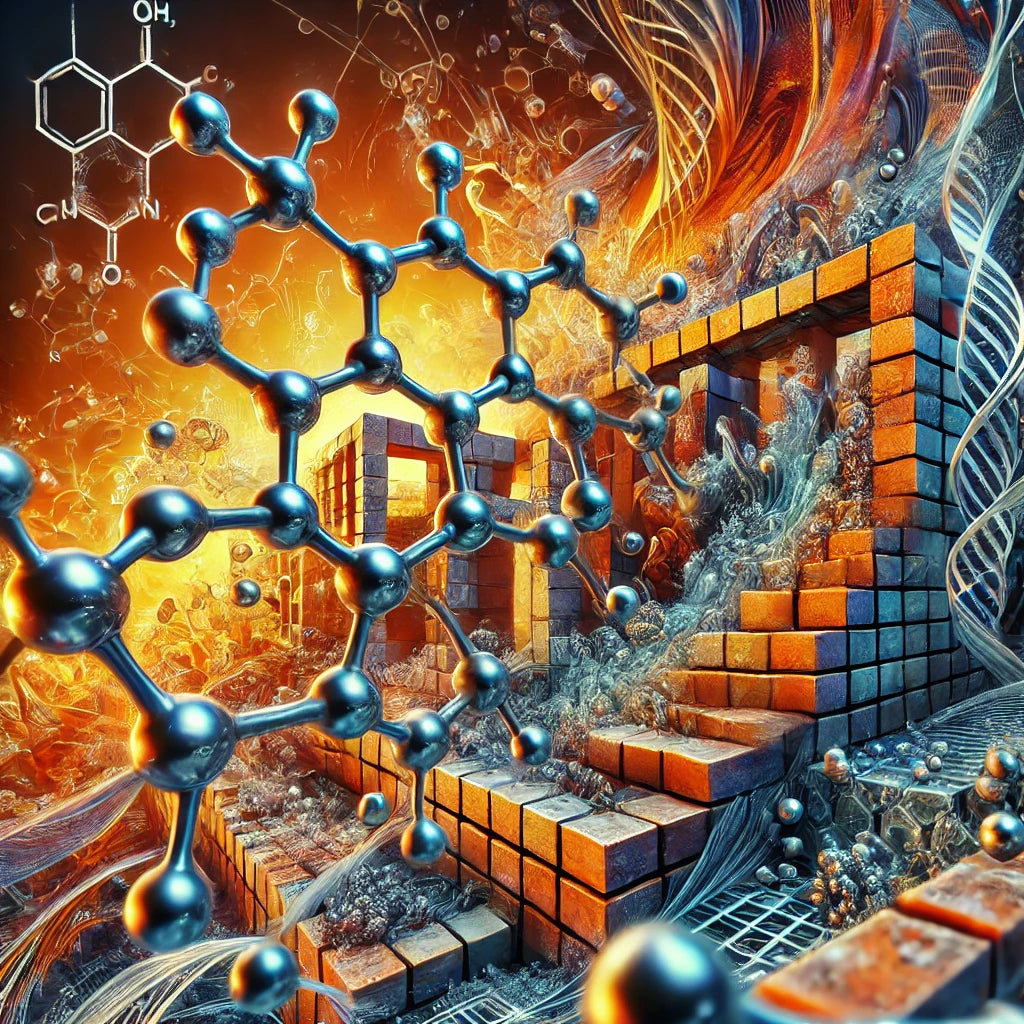
Nanotechnology and Construction: A Sustainable Revolution
Share
Introduction :
Nanotechnology is revolutionizing the construction industry by strengthening materials at the molecular level. Nanoparticles offer increased strength, better insulation, and self-cleaning properties. This article explores how these innovations can improve the sustainability of buildings while reducing maintenance costs.
Topic covered :
- Nanotechnology in concrete and coatings
- Reducing wear with nanomaterials
- Future applications in smart construction
The Nanotechnology Revolution in the Construction Industry
Introduction
Nanotechnology is radically transforming the construction industry, bringing significant improvements in the durability, strength, and efficiency of materials used. At the nanoscale, nanoparticles offer a unique opportunity to manipulate matter to optimize the physical properties of building materials such as concrete, coatings, and other critical components. These advances make it possible to create buildings that are stronger, more insulating, and have autonomous properties such as self-cleaning.
This article delves into the fascinating aspects of nanotechnology in construction, exploring current and future applications of nanomaterials, and how they help reduce wear and tear on infrastructure while lowering maintenance costs.
Nanotechnology in Concrete and Coatings
Nanotechnology in Concrete
Concrete is one of the most commonly used materials in the construction industry. However, it presents challenges in terms of crack resistance, wear resistance, and long-term durability. Thanks to nanotechnology, it is now possible to improve the mechanical properties of concrete by incorporating nanoparticles such as titanium dioxide, silicon oxide, or graphene.
-
Structural Strengthening : Nanoparticles act as an “enhanced cement”, penetrating microcracks and strengthening the concrete matrix at the molecular level. This makes the concrete more resistant to compressive forces and spalling.
-
Porosity Reduction : Nanoparticles reduce the porosity of concrete, making the surface more impermeable to liquids, which is crucial to prevent erosion due to the infiltration of water or corrosive chemicals.
-
Self-cleaning : Some nanoparticles, such as titanium dioxide, give concrete self-cleaning properties. When exposed to UV light, titanium dioxide triggers a reaction that breaks down organic pollutants on the concrete surface. This significantly reduces dirt buildup and improves the appearance of buildings over time.
Nanotechnology in Coatings
Protective coatings are another area where nanotechnology is working wonders. Traditional coatings are often vulnerable to scratches, UV rays, extreme weather conditions, and abrasion. Nanocoatings are designed to solve these problems.
-
Scratch and Wear Resistance : Nanocoatings are composed of nano-sized particles that form an extremely thin but highly resistant layer. This layer protects surfaces from scratches, abrasion, and wear caused by the elements.
-
UV Protection : Nanoparticles can also be incorporated into coatings to absorb UV rays, preventing degradation of the materials underneath and preventing discoloration.
-
Antimicrobial Properties : Nanotechnology coatings can also be given antimicrobial properties by incorporating silver or copper nanoparticles. These particles destroy bacteria and fungi, contributing to cleaner environments, especially in hospitals or public spaces.
Reduction of Wear through Nanomaterials
Infrastructure and buildings experience forms of wear and tear due to environmental, mechanical, and chemical forces. Nanotechnology helps reduce these effects by optimizing the surface properties and structural strength of materials.
-
Erosion Resistance : Surface erosion is a recurring problem in buildings, especially in areas exposed to extreme weather conditions. Nanotechnology coatings and additives provide increased protection against erosion by creating hydrophobic surfaces that repel water and corrosive agents.
-
Improved Mechanical Strength : Nanoparticles such as graphene have been shown to strengthen materials such as concrete and steel, improving their tensile and compressive strength. This helps reduce the formation of cracks, thereby increasing the lifespan of infrastructure.
-
Reduced Maintenance Costs : By increasing the durability and strength of materials, nanotechnology reduces the frequency of repairs and maintenance. Buildings and infrastructure with nanotechnology materials require less maintenance over time, resulting in significant cost savings for building managers.
Future Applications in Smart Construction
The future of construction is moving toward smart, autonomous buildings. Nanotechnology will play a central role in this transformation, including improved energy management systems, smart sensors, and adaptive materials.
-
Adaptive Materials : Smart nanomaterials are able to adapt to changes in the environment. For example, some coatings can change color or texture depending on temperature or humidity, providing increased protection and optimal thermal control.
-
Nanotechnology Sensors : Nanotechnology-based sensors are used to monitor the health of buildings in real time, detect microscopic cracks, and monitor humidity or other critical parameters. This enables proactive management of infrastructure and prevention of failures.
-
Energy Optimization : Nanomaterials can also contribute to the energy efficiency of smart buildings. Nanotechnology windows, for example, can regulate the light and heat entering a building, reducing the need for heating and cooling.
Conclusion
Nanotechnology offers a wealth of opportunities to revolutionize the construction industry. By strengthening materials at the molecular level, it can create stronger, more durable, and more energy-efficient buildings. Whether in concrete, coatings, or future smart applications, nanomaterials will continue to play a central role in improving our infrastructure, while reducing wear and maintenance costs.
Future innovations promise even more technological breakthroughs that will transform the way we design, construct and maintain our buildings, bringing considerable added value to the construction industry.
